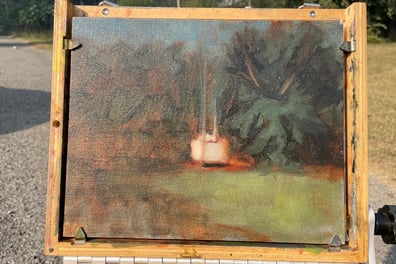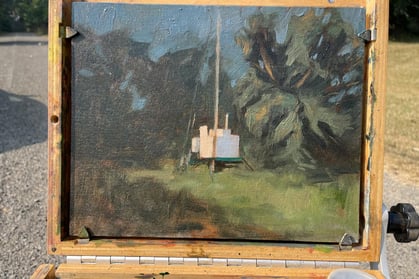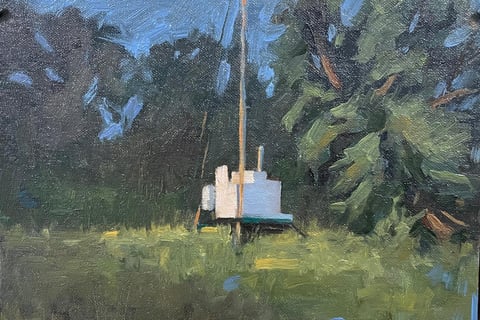Simplification vs. Detail in Landscape Painting: Finding the Right Balance
When we paint outdoors, nature overwhelms us. We see millions of leaves, branches, and blades of grass. Each comes in a variety of colors—rich greens, soft blues, vibrant yellows, oranges, and reds.
This beauty can be inspiring but also intimidating.
If we try to capture every detail, chaos can ensue. Our painting may lose harmony. It might go completely out of control.
As artist John Carlson wisely said:
“The eye is greedy. There is always too much material to be seen, with not enough synthesis. If you approach nature without some idea, she is merciless in the way she piles lumber in your way.”
This insight is crucial for painters.
The Importance of Simplification
So, how do we tackle landscape painting? The key lies in simplification. Start by capturing the essence of the scene. But this raises another question: What about details? Are they essential too?
Yes! Both simplification and detail matter in art. Painting is all about interpretation. Instead of replicating every element, we create broad abstract shapes of color on canvas. Details provide vital information for the visual story we tell.
Apply the Pareto Principle
Let’s consider the Pareto Principle. It suggests that 80% of outcomes come from 20% of causes. For us landscape painters, this means our first 20% of time should focus on simplification and composition.
That alone gives 80% of the result!
Here’s how to get started:
Begin with Abstract Simplification: Break down the subject into big shapes. Use three to four midtones for main compositional lines with dark strokes. This gives you a solid framework.
Block in the Abstract Shapes: Quickly outline key elements. Think of the shape of a house or clusters of trees. Connect shadow shapes to create light and shadow patterns.
Block in the Midtones: Strengthen the light and shadow pattern. Add midtones to provide depth to your work.
By focusing on these steps, you can achieve 80% of your visual effect in the first half hour of painting!
Finding the Right Amount of Detail
Simplified shapes capture the essence effectively. But details still matter. They enrich our stories. It’s essential to choose which details to include carefully. Follow these guidelines:
Paint Details in the Focal Area First: Start where you want to draw the viewer’s attention.
Add Details to Other Areas Next: Incorporate details in surrounding areas for a cohesive look.
Keep Details Subordinate to the Main Masses: Ensure details enhance, not overshadow, dominant elements.
Conclusion
In summary, a successful landscape painting balances simplification and detail. Simplifying your subject clarifies your vision. Details enrich the visual narrative. Together, they create compelling artwork.
Next time you’re outdoors with your brush, remember: simplify first, then add details.
Happy painting!






